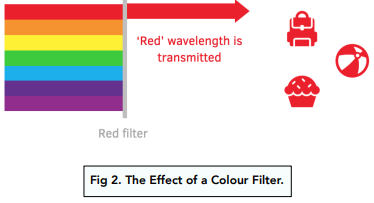Visible Light and Colours (GCSE Physics)
Visible Light and Colours
Colours of Visible Light
- Visible light is split into colours. The visible light section of the EM spectrum is further divided into its own spectrum. In fact visible light is made up of a spectrum of 7 different colours.
- Each colour has a wavelength and frequency. Each of the 7 colours of visible light will have their own wavelength and frequency. Violet light has the shortest wavelength and the highest frequency, whilst red light has the longest wavelength and the lowest frequency out of visible light.
Reflection
The Two Types of Reflection
- There are 2 types of reflection. When we talk about reflection, there can be two types. They are called specular reflection and diffuse reflection. Specular reflection occurs when waves hit a smooth surface, whilst diffuse reflection occurs when the waves hit a distorted, uneven surface.
- The 2 types of reflected waves are different. When there is specular reflection, the reflected wave will have the same angle of reflection as angle of incidence. When there is diffuse reflection, the reflected wave will have a different angle of reflection compared to the angle of incidence.


Colour Filters
- Colour filters use wave properties. Colour filters use wave properties to change the colours of objects. They will absorb certain wavelengths of light, letting other wavelengths through.
- Wavelengths are absorbed or transmitted. Essentially, colour filters will absorb some wavelength and transmit the rest. When they do this, the colour filters are also effectively absorbing and transmitting colours at the same time.
Effects of Filters
- Objects can be viewed through filters. We can view various objects through colour filters. The colour filters will absorb some of the wavelengths of light and transmit the others.
- Appearance of objects can change. When objects are viewed through filters, they can change in appearance. More specifically, the colour of the objects will change depending on the colour of the filter that is used. When light passes through a red filter for example, the ‘red’ wavelength is transmitted, whilst the rest of the wavelengths are absorbed. This will make any object that is viewed through this filter appear red.






Still got a question? Leave a comment
Leave a comment